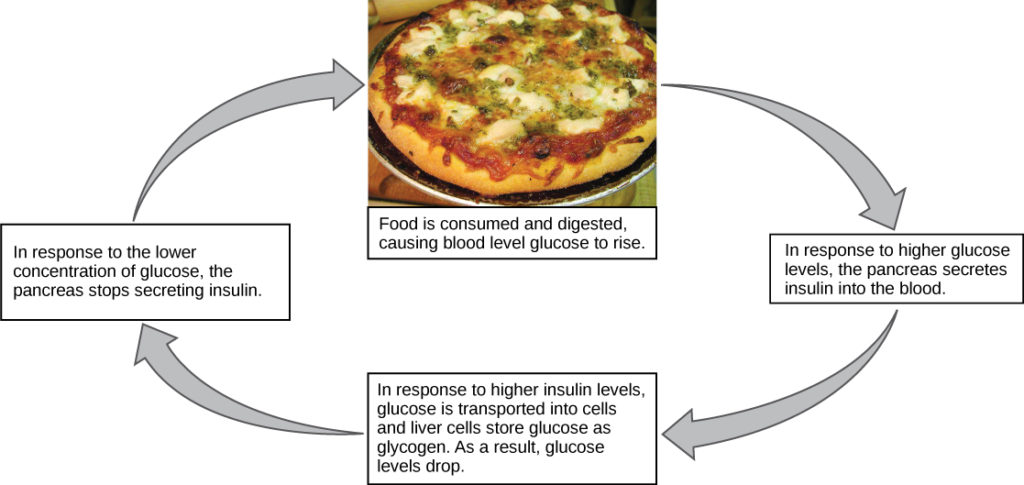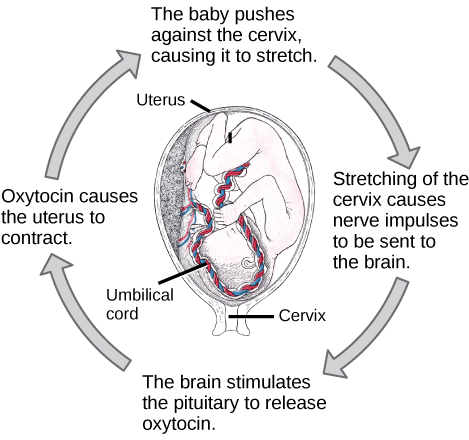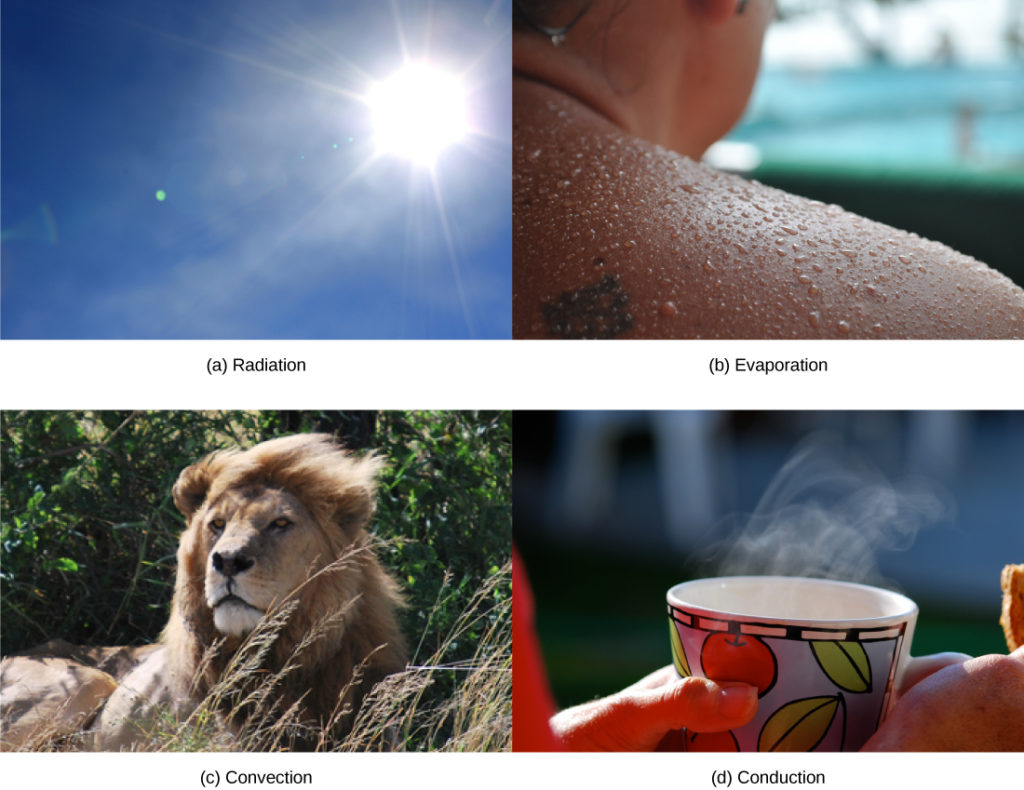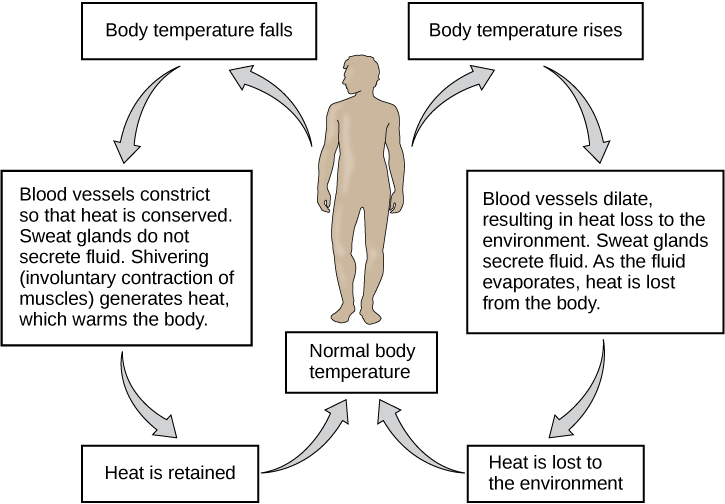What type of homeostatic mechanism is this species using to regulate its internal salt levels?
Learning Objectives
By the end of this department, y'all will exist able to:
- Define homeostasis
- Depict the factors affecting homeostasis
- Hash out positive and negative feedback mechanisms used in homeostasis
- Describe thermoregulation of endothermic and ectothermic animals
Fauna organs and organ systems constantly suit to internal and external changes through a process called homeostasis ("steady state"). These changes might be in the level of glucose or calcium in blood or in external temperatures. Homeostasis means to maintain dynamic equilibrium in the trunk. It is dynamic because it is constantly adjusting to the changes that the torso's systems encounter. It is equilibrium considering body functions are kept within specific ranges. Even an animal that is obviously inactive is maintaining this homeostatic equilibrium.
Homeostatic Process
The goal of homeostasis is the maintenance of equilibrium around a indicate or value called a set betoken. While at that place are normal fluctuations from the ready point, the body's systems will unremarkably attempt to go back to this point. A change in the internal or external surround is called a stimulus and is detected by a receptor; the response of the system is to adjust the difference parameter toward the set indicate. For case, if the trunk becomes also warm, adjustments are fabricated to cool the brute. If the blood's glucose rises after a meal, adjustments are made to lower the blood glucose level past getting the nutrient into tissues that demand it or to store it for after apply.
Control of Homeostasis
When a modify occurs in an brute'due south surround, an adjustment must be made. The receptor senses the change in the environment, then sends a signal to the control center (in most cases, the brain) which in turn generates a response that is signaled to an effector. The effector is a muscle (that contracts or relaxes) or a gland that secretes. Homeostatsis is maintained by negative feedback loops. Positive feedback loops actually push the organism farther out of homeostasis, but may be necessary for life to occur. Homeostasis is controlled by the nervous and endocrine system of mammals.
Negative Feedback Mechanisms
Any homeostatic procedure that changes the direction of the stimulus is a negative feedback loop. It may either increase or decrease the stimulus, but the stimulus is not immune to continue as it did before the receptor sensed it. In other words, if a level is also loftier, the body does something to bring it down, and conversely, if a level is also low, the torso does something to brand it go upwards. Hence the term negative feedback. An example is animal maintenance of blood glucose levels. When an creature has eaten, claret glucose levels rise. This is sensed past the nervous arrangement. Specialized cells in the pancreas sense this, and the hormone insulin is released by the endocrine organization. Insulin causes blood glucose levels to decrease, as would exist expected in a negative feedback system, as illustrated in Figure ane. Nonetheless, if an animal has non eaten and blood glucose levels decrease, this is sensed in some other group of cells in the pancreas, and the hormone glucagon is released causing glucose levels to increase. This is still a negative feedback loop, simply not in the direction expected by the use of the term "negative." Some other instance of an increase as a result of the feedback loop is the control of blood calcium. If calcium levels decrease, specialized cells in the parathyroid gland sense this and release parathyroid hormone (PTH), causing an increased assimilation of calcium through the intestines and kidneys and, possibly, the breakdown of bone in lodge to liberate calcium. The effects of PTH are to raise claret levels of the chemical element. Negative feedback loops are the predominant mechanism used in homeostasis.

Figure 1. Blood sugar levels are controlled by a negative feedback loop. (credit: modification of work past Jon Sullivan)
Positive Feedback Loop
A positive feedback loop maintains the management of the stimulus, perchance accelerating it. Few examples of positive feedback loops exist in beast bodies, but i is found in the pour of chemical reactions that consequence in blood clotting, or coagulation. Equally ane clotting gene is activated, information technology activates the next factor in sequence until a fibrin clot is achieved. The direction is maintained, non changed, so this is positive feedback. Some other instance of positive feedback is uterine contractions during childbirth, as illustrated in Effigy 2. The hormone oxytocin, fabricated past the endocrine organisation, stimulates the contraction of the uterus. This produces pain sensed past the nervous system. Instead of lowering the oxytocin and causing the pain to subside, more oxytocin is produced until the contractions are powerful plenty to produce childbirth.
Art Connexion

State whether each of the following processes is regulated past a positive feedback loop or a negative feedback loop.
- A person feels satiated after eating a large meal.
- The blood has plenty of red claret cells. Equally a event, erythropoietin, a hormone that stimulates the production of new red blood cells, is no longer released from the kidney.
Set Point
It is possible to adapt a arrangement's set betoken. When this happens, the feedback loop works to maintain the new setting. An example of this is blood force per unit area: over fourth dimension, the normal or set point for blood pressure can increase equally a result of continued increases in blood pressure. The body no longer recognizes the peak as abnormal and no attempt is made to return to the lower prepare point. The result is the maintenance of an elevated blood pressure that tin accept harmful effects on the body. Medication can lower blood pressure and lower the set point in the arrangement to a more healthy level. This is chosen a process of alteration of the set point in a feedback loop.
Changes can be made in a group of trunk organ systems in society to maintain a set point in some other organisation. This is called acclimatization. This occurs, for instance, when an animal migrates to a higher altitude than it is accustomed to. In society to arrange to the lower oxygen levels at the new altitude, the trunk increases the number of blood-red blood cells circulating in the blood to ensure adequate oxygen commitment to the tissues. Another case of acclimatization is animals that have seasonal changes in their coats: a heavier coat in the winter ensures adequate heat retentiveness, and a light glaze in summer assists in keeping body temperature from rising to harmful levels.
Link to Learning
Feedback mechanisms can exist understood in terms of driving a race car along a track: watch a brusque video lesson on positive and negative feedback loops.
Homeostasis: Thermoregulation
Body temperature affects body activities. Generally, equally body temperature rises, enzyme activeness rises too. For every x caste centigrade rising in temperature, enzyme activity doubles, upwards to a point. Torso proteins, including enzymes, begin to denature and lose their part with high heat (around 50oC for mammals). Enzyme activity will decrease by one-half for every ten degree centigrade drop in temperature, to the point of freezing, with a few exceptions. Some fish can withstand freezing solid and return to normal with thawing.
Link to Learning
Lookout man this Discovery Channel video on thermoregulation to see illustrations of this procedure in a variety of animals.
Endotherms and Ectotherms
Animals tin can exist divided into 2 groups: some maintain a abiding body temperature in the face of differing environmental temperatures, while others accept a torso temperature that is the same as their environment and thus varies with the environment. Animals that do not command their body temperature are ectotherms. This group has been called common cold-blooded, but the term may not employ to an animal in the desert with a very warm body temperature. In dissimilarity to ectotherms, which rely on external temperatures to prepare their trunk temperatures, poikilotherms are animals with constantly varying internal temperatures. An animate being that maintains a constant body temperature in the face of ecology changes is called a homeotherm. Endotherms are animals that rely on internal sources for torso temperature but which tin exhibit extremes in temperature. These animals are able to maintain a level of action at cooler temperature, which an ectotherm cannot due to differing enzyme levels of activity.
Heat can be exchanged betwixt an fauna and its environment through 4 mechanisms: radiation, evaporation, convection, and conduction. Radiation is the emission of electromagnetic "heat" waves. Rut comes from the sunday in this manner and radiates from dry out pare the same way. Heat tin can be removed with liquid from a surface during evaporation. This occurs when a mammal sweats. Convection currents of air remove estrus from the surface of dry out skin as the air passes over it. Heat will be conducted from one surface to another during direct contact with the surfaces, such as an brute resting on a warm rock.

Figure 3. Rut can exist exchanged by four mechanisms: (a) radiation, (b) evaporation, (c) convection, or (d) conduction. (credit b: modification of work by "Kullez"/Flickr; credit c: modification of work by Chad Rosenthal; credit d: modification of work past "stacey.d"/Flickr)
Heat Conservation and Dissipation
Animals conserve or dissipate heat in a variety of ways. In certain climates, endothermic animals accept some form of insulation, such as fur, fat, feathers, or some combination thereof. Animals with thick fur or feathers create an insulating layer of air between their skin and internal organs. Polar bears and seals alive and swim in a subfreezing environment and even so maintain a constant, warm, trunk temperature. The arctic fox, for example, uses its fluffy tail as extra insulation when information technology curls up to sleep in common cold weather. Mammals have a residual effect from shivering and increased muscle action: arrector pili muscles cause "goose bumps," causing small hairs to stand upward when the private is cold; this has the intended upshot of increasing torso temperature. Mammals employ layers of fat to achieve the same finish. Loss of meaning amounts of body fat will compromise an individual'southward power to conserve heat.
Endotherms use their circulatory systems to assist maintain trunk temperature. Vasodilation brings more claret and rut to the body surface, facilitating radiation and evaporative heat loss, which helps to cool the trunk. Vasoconstriction reduces blood flow in peripheral claret vessels, forcing claret toward the core and the vital organs found there, and conserving oestrus. Some animals take adaptions to their circulatory system that enable them to transfer heat from arteries to veins, warming blood returning to the center. This is called a countercurrent heat exchange; it prevents the cold venous blood from cooling the heart and other internal organs. This adaption tin be close downwards in some animals to prevent overheating the internal organs. The countercurrent adaption is constitute in many animals, including dolphins, sharks, bony fish, bees, and hummingbirds. In contrast, similar adaptations tin aid cool endotherms when needed, such as dolphin flukes and elephant ears.
Some ectothermic animals use changes in their beliefs to assist regulate trunk temperature. For example, a desert ectothermic creature may just seek cooler areas during the hottest part of the day in the desert to keep from getting too warm. The aforementioned animals may climb onto rocks to capture estrus during a cold desert night. Some animals seek water to assist evaporation in cooling them, every bit seen with reptiles. Other ectotherms use group activity such as the activity of bees to warm a hive to survive wintertime.
Many animals, especially mammals, use metabolic waste material rut as a oestrus source. When muscles are contracted, most of the energy from the ATP used in muscle deportment is wasted energy that translates into heat. Severe cold elicits a shivering reflex that generates heat for the body. Many species likewise have a blazon of adipose tissue called brownish fat that specializes in generating heat.
Neural Command of Thermoregulation
The nervous system is important to thermoregulation, every bit illustrated in Effigy iv. The processes of homeostasis and temperature control are centered in the hypothalamus of the avant-garde beast encephalon.
Fine art Connection

Figure four. The body is able to regulate temperature in response to signals from the nervous system.
When bacteria are destroyed by leuckocytes, pyrogens are released into the blood. Pyrogens reset the body's thermostat to a college temperature, resulting in fever. How might pyrogens crusade the body temperature to rise?
The hypothalamus maintains the set up point for trunk temperature through reflexes that crusade vasodilation and sweating when the body is besides warm, or vasoconstriction and shivering when the body is too cold. It responds to chemicals from the body. When a bacterium is destroyed by phagocytic leukocytes, chemicals called endogenous pyrogens are released into the claret. These pyrogens circulate to the hypothalamus and reset the thermostat. This allows the trunk'southward temperature to increase in what is normally called a fever. An increase in trunk temperature causes iron to be conserved, which reduces a nutrient needed by bacteria. An increment in body estrus as well increases the activeness of the animate being's enzymes and protective cells while inhibiting the enzymes and activeness of the invading microorganisms. Finally, estrus itself may also kill the pathogen. A fever that was one time thought to be a complication of an infection is now understood to be a normal defense mechanism.
Section Summary
Homeostasis is a dynamic equilibrium that is maintained in body tissues and organs. Information technology is dynamic considering it is constantly adjusting to the changes that the systems meet. It is in equilibrium because body functions are kept within a normal range, with some fluctuations effectually a set point for the processes.
Additional Self Check Questions
B. The blood has plenty of cherry-red blood cells. As a result, erythropoietin, a hormone that stimulates the production of new red claret cells, is no longer released from the kidney.
2. When bacteria are destroyed by leuckocytes, pyrogens are released into the blood. Pyrogens reset the body's thermostat to a higher temperature, resulting in fever. How might pyrogens cause the torso temperature to rise?
iii. Why are negative feedback loops used to control torso homeostasis?
4. Why is a fever a "good matter" during a bacterial infection?
5. How is a condition such as diabetes a good example of the failure of a set up signal in humans?
Answers
ane. Both processes are the event of negative feedback loops. Negative feedback loops, which tend to keep a system at equilibrium, are more common than positive feedback loops.
2. Pyrogens increase body temperature by causing the claret vessels to constrict, inducing shivering, and stopping sweat glands from secreting fluid.
3. An aligning to a change in the internal or external environment requires a change in the direction of the stimulus. A negative feedback loop accomplishes this, while a positive feedback loop would continue the stimulus and result in harm to the animal.four. Mammalian enzymes increase activity to the point of denaturation, increasing the chemical activity of the cells involved. Bacterial enzymes have a specific temperature for their most efficient activity and are inhibited at either higher or lower temperatures. Fever results in an increase in the devastation of the invading leaner by increasing the effectiveness of body defenses and an inhibiting bacterial metabolism.
5. Diabetes is often associated with a lack in production of insulin. Without insulin, blood glucose levels become upwardly afterward a meal, but never go back downwards to normal levels.
Glossary
acclimatization:amending in a body organization in response to environmental change
alteration:change of the set point in a homeostatic organisation
homeostasis:dynamic equilibrium maintaining appropriate trunk functions
negative feedback loop:feedback to a control mechanism that increases or decreases a stimulus instead of maintaining it
positive feedback loop:feedback to a control mechanism that continues the direction of a stimulus
set signal:midpoint or target bespeak in homeostasis
thermoregulation:regulation of torso temperature
Source: https://courses.lumenlearning.com/suny-biology1/chapter/homeostasis/
0 Response to "What type of homeostatic mechanism is this species using to regulate its internal salt levels?"
Post a Comment